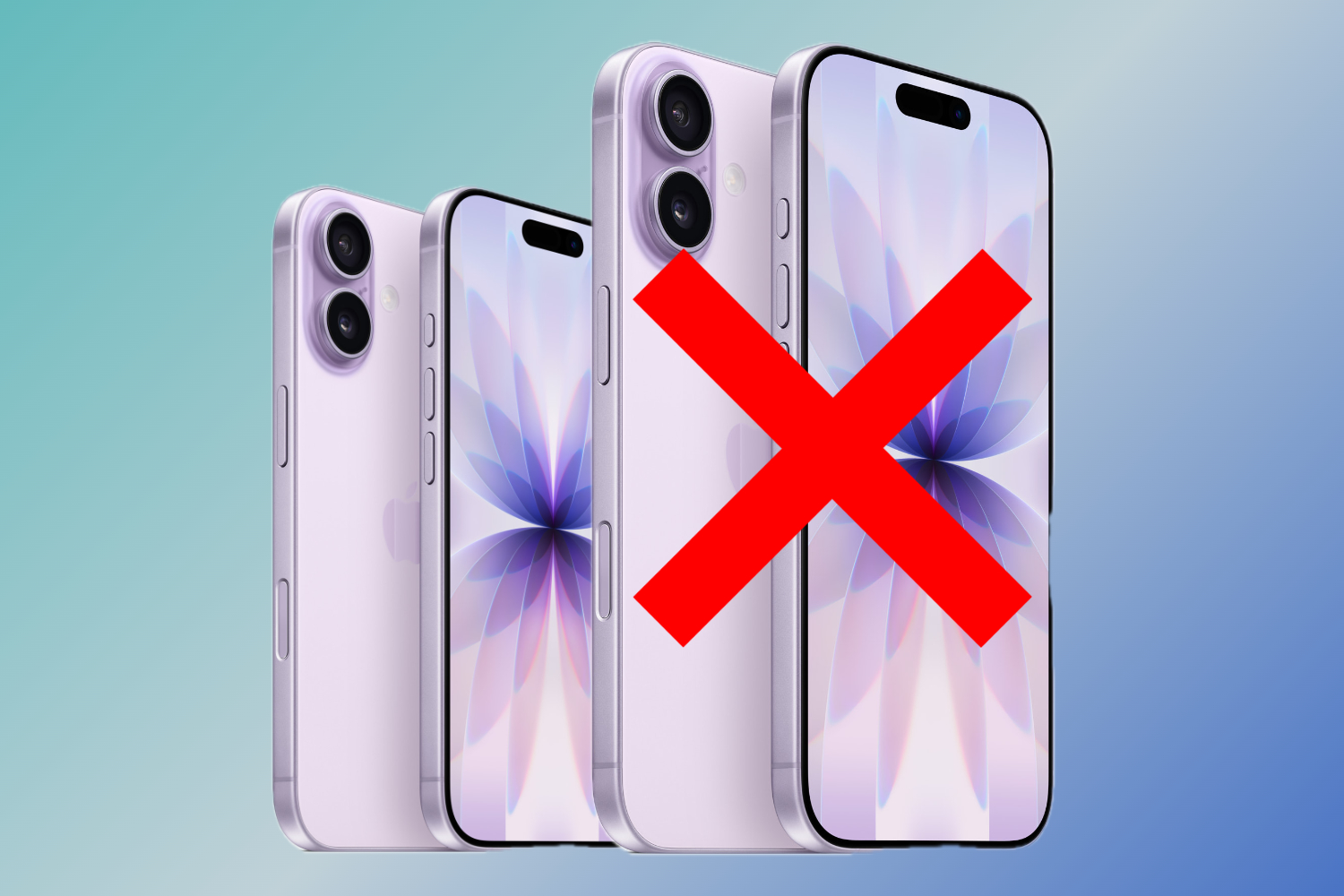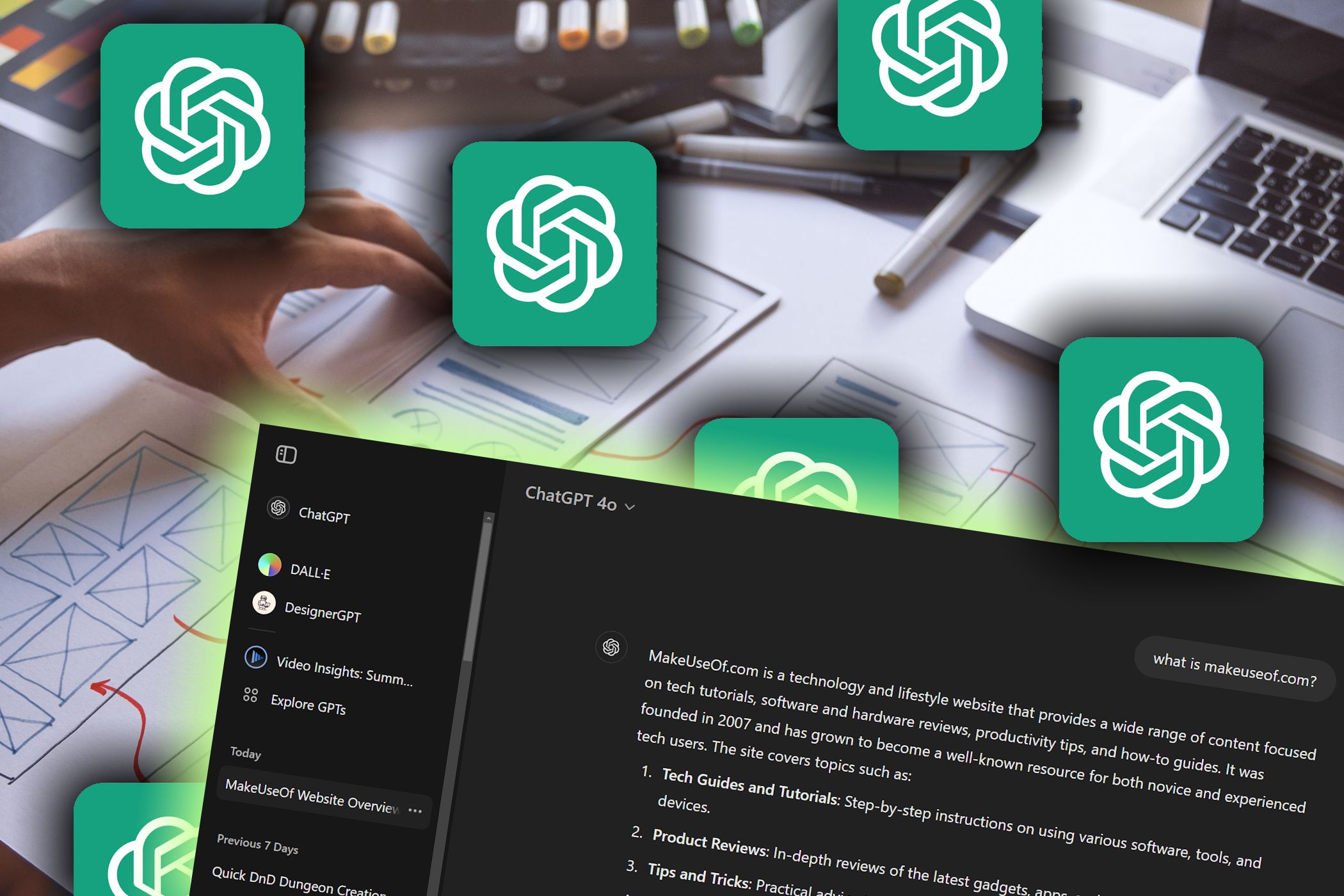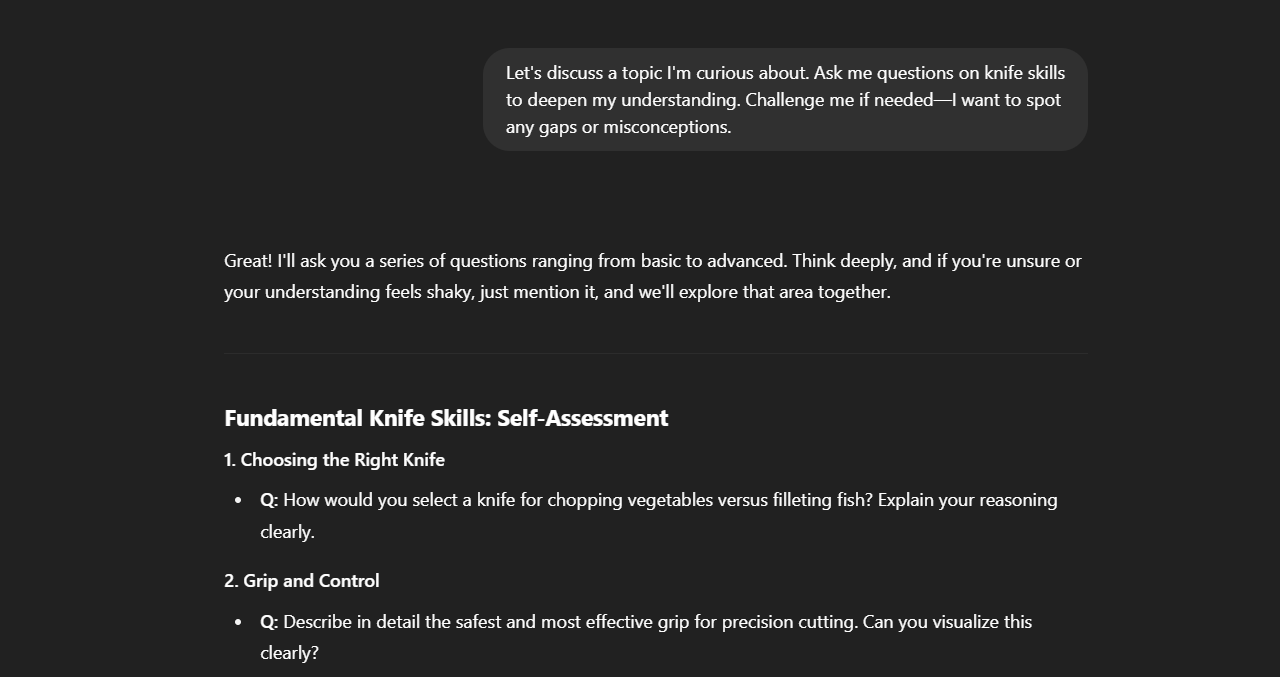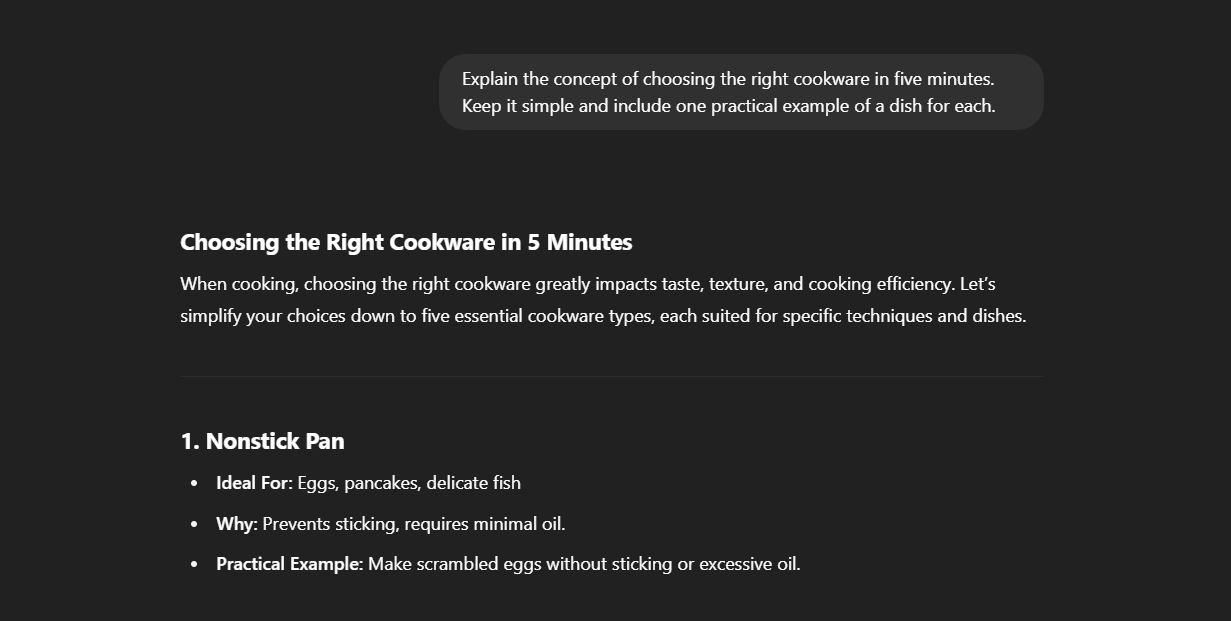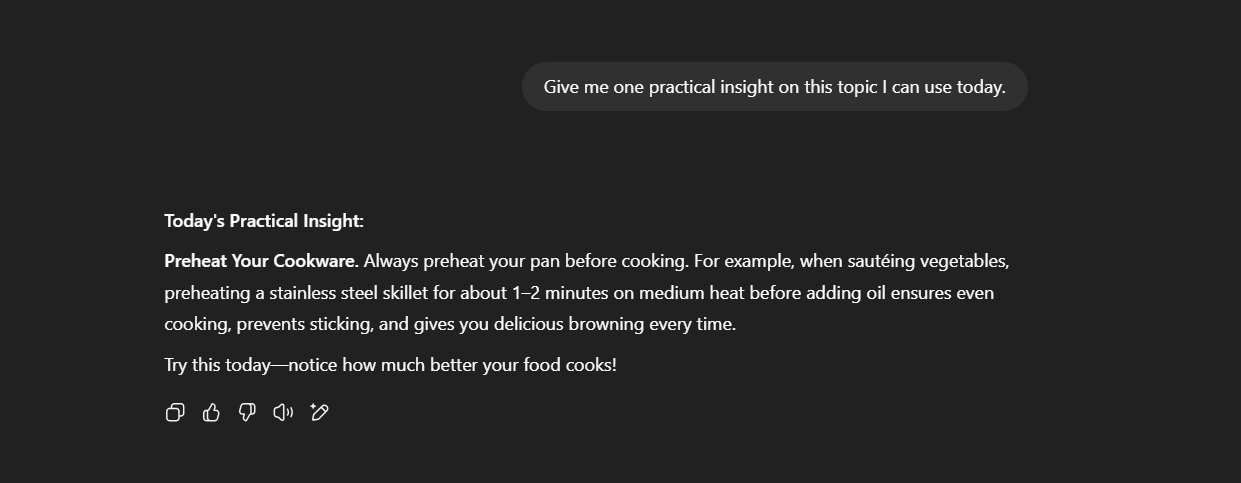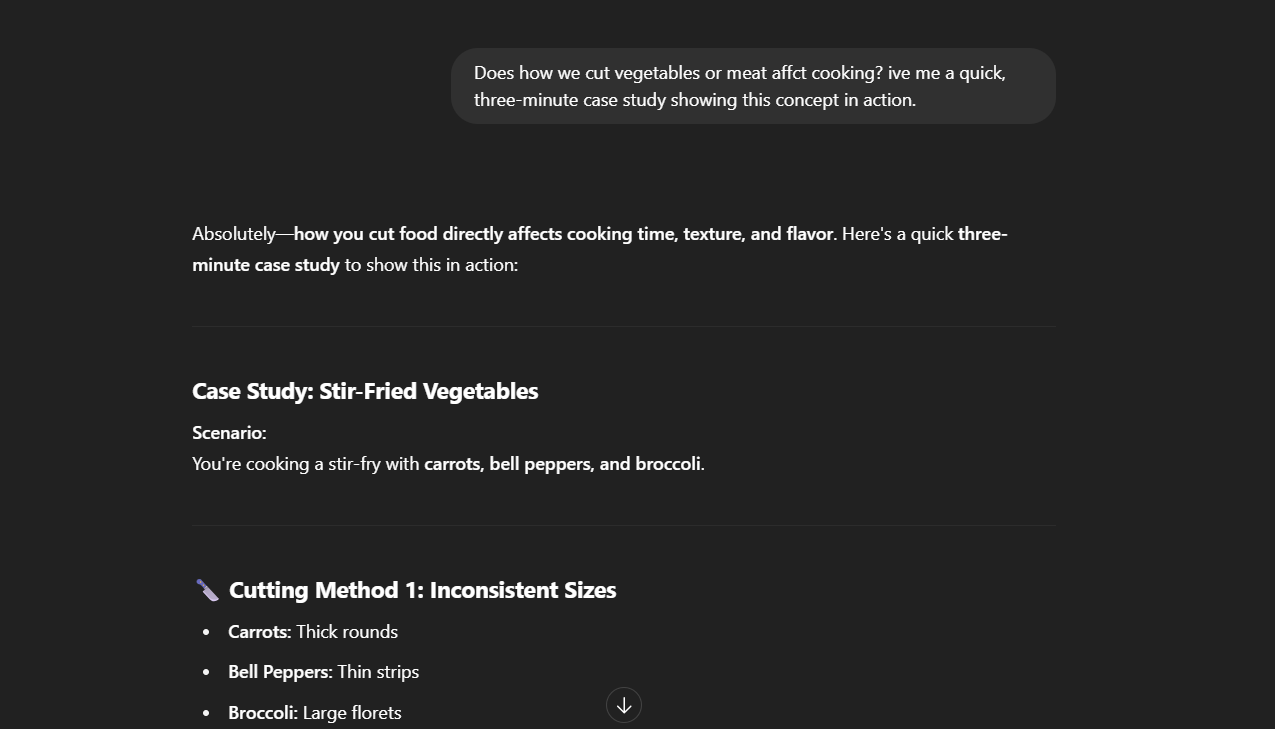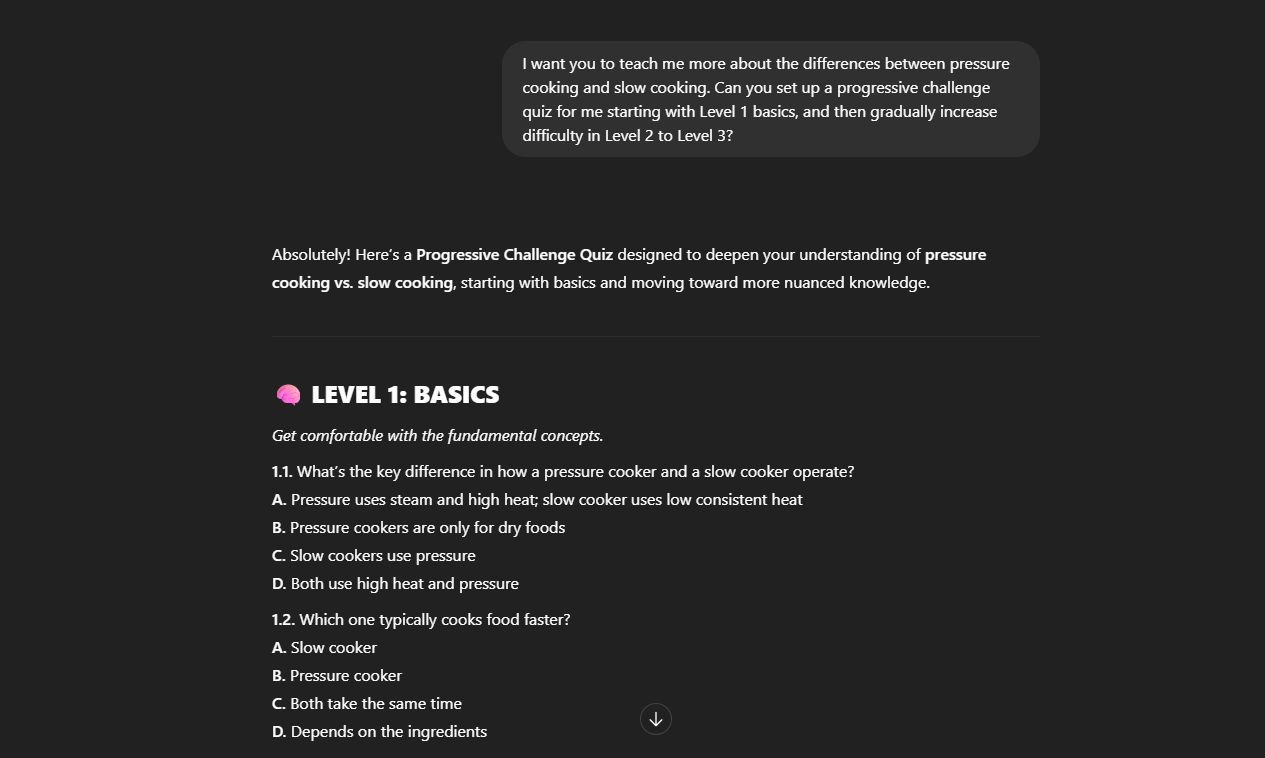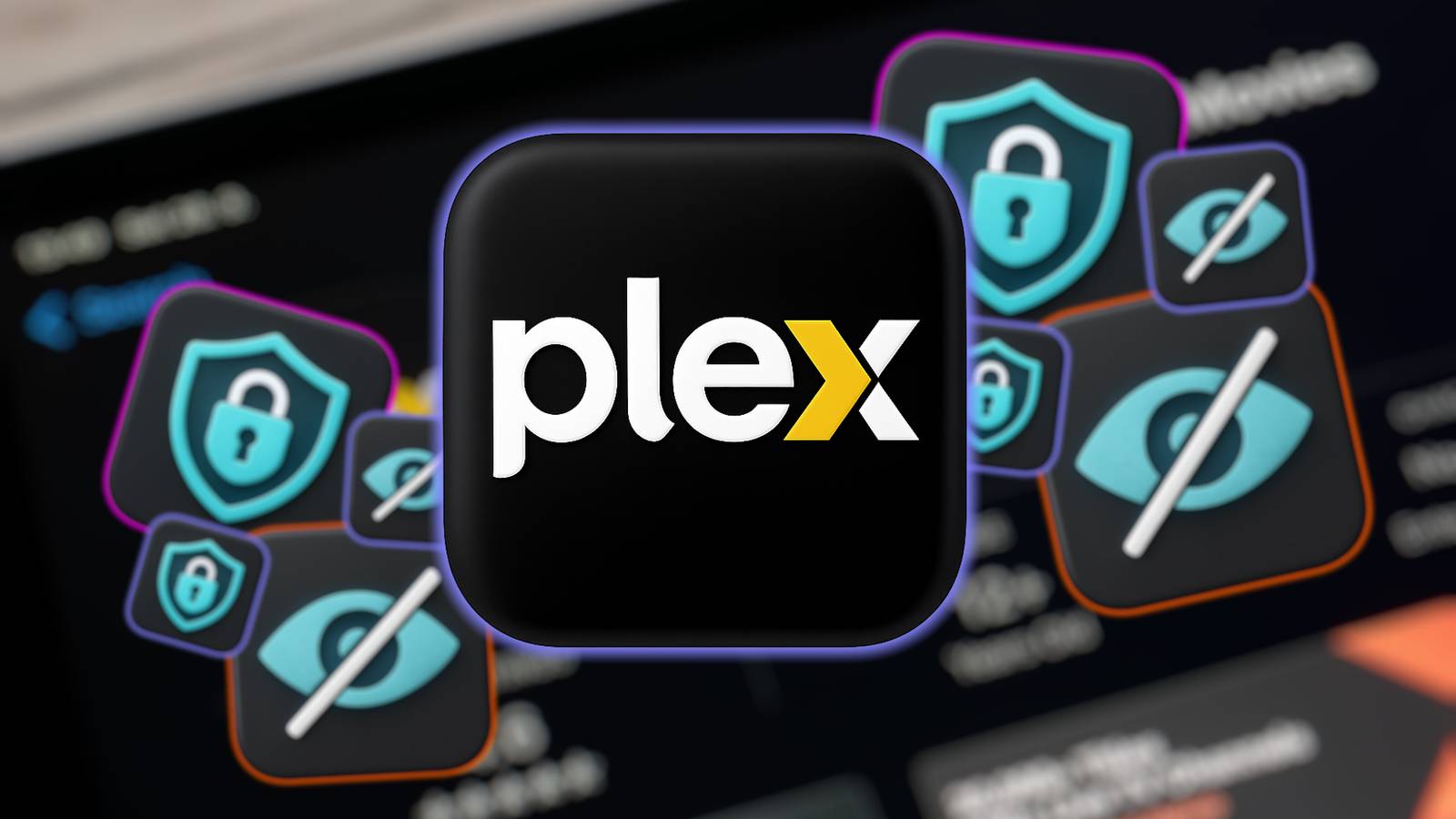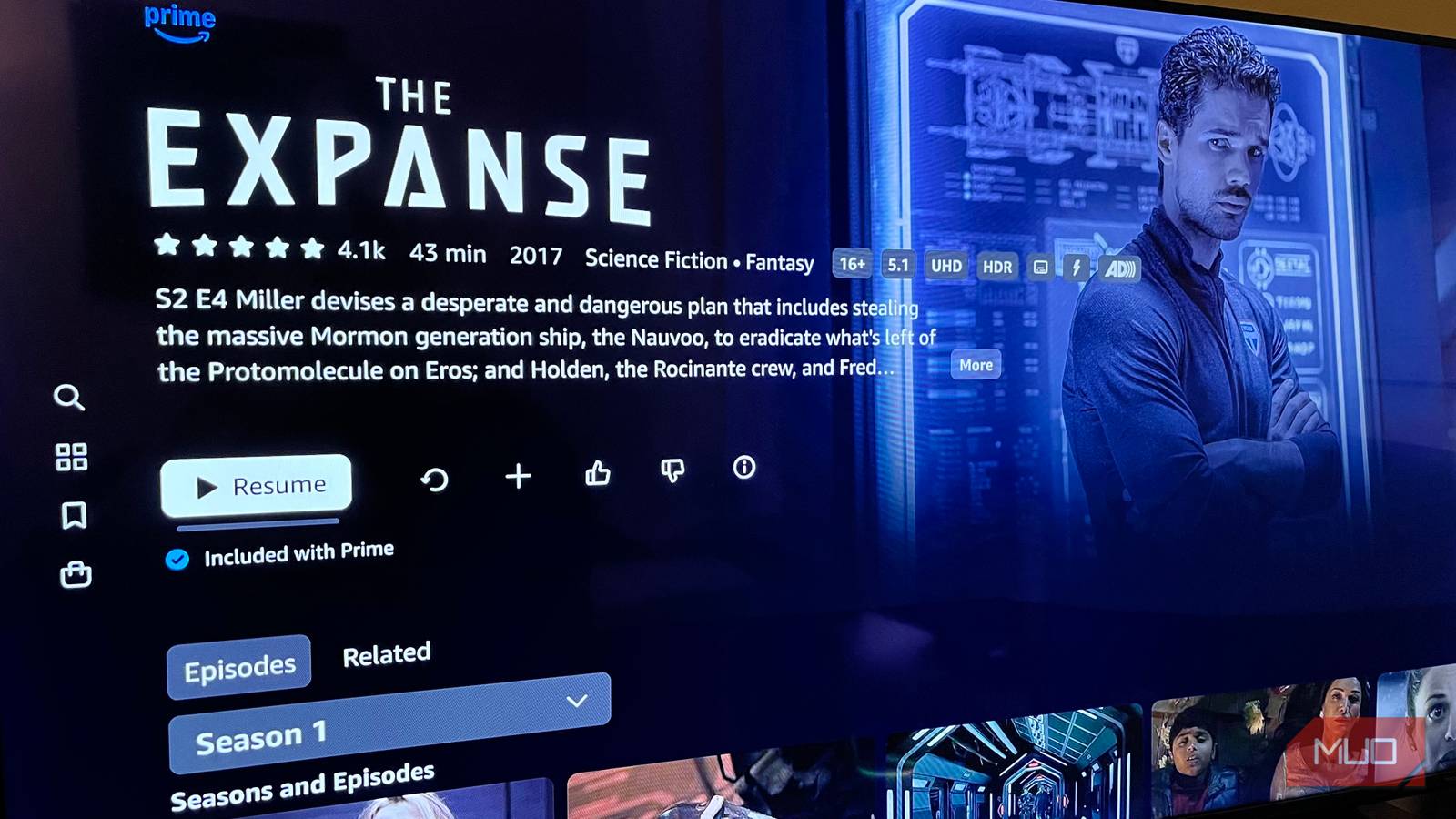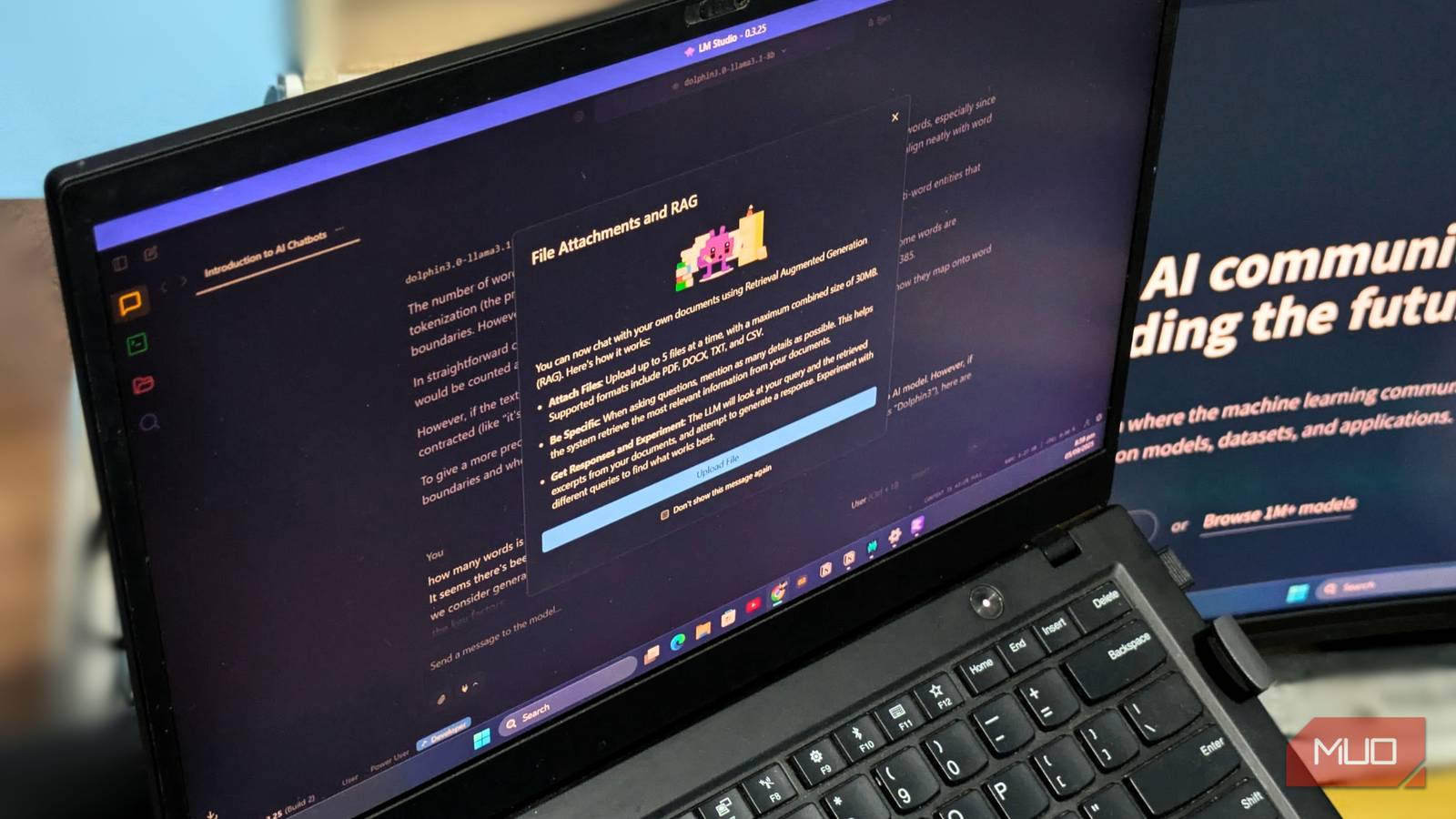Online learning is overwhelming—there’s too much info and not enough structure. But it doesn’t have to feel overwhelming if you are willing to use little bits of time every day. So I came up six reusable prompts that turn ChatGPT into a private tutor.
1
Set Up Your Microlearning Course
ChatGPT can design a microlearning path for you. I recommend you pick a narrow area within a topic instead of a broader subject to make your microlearning sessions more specific.
You are an educational expert who can design microlearning courses aligned with constructivist learning theories. I want to use microlearning to improve my knowledge on [Topic]. Shall we start?
I am trying to improve my cooking skills by understanding the fundamentals, especially food chemistry. Here’s how I started:
2
Interactive Learning Prompts
Interactive prompts nudge you into the learning process. The back-and-forth chats with the LLM help you actively build your understanding.
One approach I recommend is the prompt I borrowed from the Feynman Technique (so named after the famous physicist’s learning habit). You can say:
Let’s discuss a topic I’m curious about. Ask me questions on [Topic] to deepen my understanding. Challenge me if needed—I want to spot any gaps or misconceptions.
This dialogue-style learning helps you quickly uncover what you don’t know.
True/False Challenge Prompts are quick checks of your knowledge. Ask the AI to create true-or-false questions about a topic. These quick checks highlight what you’ve grasped and what needs more attention.
“Who’s Who” Identification Prompts work like digital flashcards. They’re especially useful when learning new terms, theories, or key figures. This approach quickly builds your recall and confidence.
3
Content Breakdown Prompts
Breaking down information into small chunks makes learning less intimidating and more effective.
Micro-Lesson Structuring prompts help with this. I usually ask the AI:
Explain this [concept] in five minutes. Keep it simple and include one practical example. Short lessons are easy to digest and improve your focus.
This is similar to the method I use with Copilot to simplify complex information.
Learning Sequence Prompts help you build knowledge step-by-step. You might request ChatGPT to:
Break this topic into five lessons. Each should logically build on the previous but still make sense individually.
This method ensures you fully understand each part before moving on.
Multimedia Help Prompts cater to visual learners. Ask for a quick explanation, a visual diagram, and then a quiz question. I’ve noticed that combining text and visuals greatly improves retention.
4
Spaced Repetition and Review Prompts
Regular review is critical for lasting retention. Spaced repetition prompts help ensure important concepts stay fresh in your memory. Though it’s not perfect, you can design your own spaced repetition system with ChatGPT Tasks, too.
A few daily Practical Tip Prompts can keep you consistently engaged. For instance, ask:
Give me one practical insight on this topic I can use today.
Small, daily doses of information significantly boost your long-term retention.
Weekly Highlight Prompts summarize your learning each week. Ask the AI:
What are the three most important things I should remember about this week’s lessons?
Regular weekly reviews solidify your understanding.
Spaced Repetition Prompts are structured to reinforce memory over longer periods. You can schedule tasks in ChatGPT with a simple prompt:
Test me on this concept after three days, then again after a week, and once more after two weeks.
Regular repetition anchors information securely in your mind. I find Anki handy for creating flashcards and learning on the go. You can take your pick from the several excellent free AI flashcard generators too,
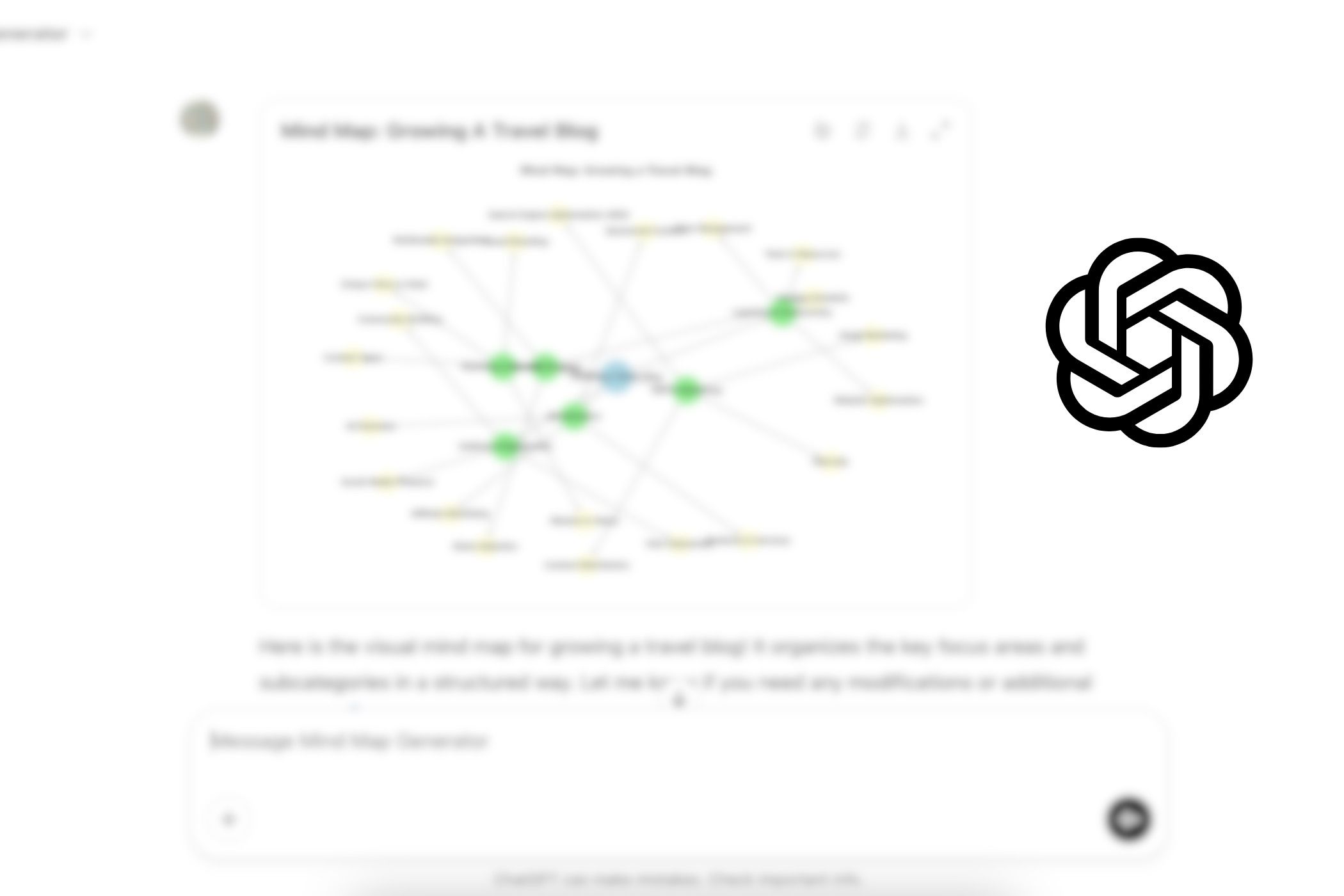
Related
5 Ways I Get Better Brainstorming Results From ChatGPT
ChatGPT is only as good as your prompts.
5
Scenario-Based Learning Prompts
Learning with scenarios puts knowledge into practical contexts. It makes abstract concepts tangible and relevant.
Case Study Highlights prompt you to apply concepts through real-world examples. Ask the AI:
Give me a quick, three-minute case study showing this concept in action.
Real-life examples help you see analogies and applications, while strengthening memory and recall.
Scenario Prompts help you apply theory practically. You can try this prompt:
Give me a workplace scenario where I need to apply this concept. Walk me through the decision-making process step-by-step.
This helps you grasp how concepts function in real-world settings.
Problem-Solving Prompts actively engage your analytical skills. Request a short, specific problem related to your topic and then a detailed, step-by-step solution. Hands-on practice like this significantly boosts comprehension.
6
Gamified Learning Prompts
Gamification turns learning into an enjoyable experience, increasing motivation and the desire to keep going with the topic.
Progressive Challenge Prompts set up learning as a series of game-like levels. Ask ChatGPT to start at Level 1 basics, then gradually increase difficulty in Level 2. Progressing through levels helps to keep score motivates you to learn more.
Interactive Quiz Prompts turn assessment into interactive fun. Type a request:
Give me a five-question quiz on this topic, with instant feedback for each answer.
Immediate feedback helps you quickly identify and correct misunderstandings.
Critical Thinking Prompts sharpen your critical thinking. Say something like:
Show me a common misconception about this topic and help me understand why it’s wrong.
Analyzing errors fills up the cracks in your learning and builds up the basic concepts of your topic.
I have found these prompts beneficial for studying basic topics. For advanced subjects (or even controversial ones), ChatGPT, like all LLMs, can hallucinate. Also, ChatGPT tends to give politically correct answers and often avoids topics it thinks don’t align with its guidelines. So, complement your learning with other methods too.
Microlearning can help you study a subject by stealing time in little bursts. You enrich your knowledge by using Deep Research for more in-depth answers. There are different ways to use Deep Research to uncover more facts and figures, though it’s still not a substitute for the hard grind of deep learning.
The above prompts are just samples I use for my microlearning experiments. Some of them have been collected and tweaked from the web. You can craft your own prompts while tailoring them to the topic you want to learn more about.




